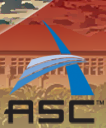The promise of an airplane capable of cruising at hypersonic speeds is
exhilarating: traveling from San Francisco to Sydney in 90 minutes, or taking
off from an ordinary airport and flying into orbit around the Earth.
An important reason why such technology is still experimental, however, is
that hypersonic vehicles are incredibly expensive and risky to build and test.
As a result, accurate computer simulation is critical. To fill that need, a new
$17 million, five-year cooperative agreement with the U.S. Department of
Energy's National Nuclear Security Administration (NNSA) will fund researchers
based at Stanford as they strive to develop predictive simulations of hypersonic
flight vehicles.
"Predicting phenomena on a computer using simulation technology doesn't
require the humongous expenses of physical flight testing and laboratory
testing," says Parviz Moin, the Franklin P. and Caroline M. Johnson Professor in
the School of Engineering and the project's director. "But hypersonic flight
systems cannot be predicted well with today's state-of-the-art simulation
capabilities."
Hypersonic flight refers to flight at speeds at least five times faster than
the speed of sound, or roughly 3,400 miles an hour at 30,000 feet. Until the
last decade, sustained hypersonic flight had only been achieved with rockets,
rather than "air-breathing" jet engines. Rockets need to carry their own oxygen
source, but jets make use of the oxygen in the atmosphere, making them more
practical for transportation.
An example of the kind of plane the scientists will simulate is NASA's X-43,
an experimental craft that has flown at Mach 9.6 (or 9.6 times the speed of
sound).
Predictive science, the primary focus of the project, is the application of
verified and validated computational simulations—an extra assurance of
accuracy—to predict the behavior of complex systems where routine experiments
are not feasible.
The challenge for the researchers will be to develop algorithms that can
model the unique physical phenomena involved in hypersonic travel. Turbulence,
aerodynamics, combustion, thermal loads and shockwaves are all different at Mach
10 than in conventional airplanes, or even at the lower end of supersonic
flight.
The research effort, announced March 7 as part of the Predictive Science
Academic Alliance Program (PSAAP) administered by the National Nuclear Security
Administration Office of Advanced Simulation and Computing (NNSA-ASC), involves
16 faculty members from Stanford's departments of Mechanical Engineering,
Computer Science, Chemical Engineering, Aeronautics and Astronautics, and
Mathematics. Stanford researchers will collaborate with colleagues at the
University of Michigan and the State University of New York at Stony Brook on
aspects of the work.
Stanford and other PSAAP centers will focus on unclassified applications of
interest to the NNSA and its three national laboratories: Lawrence Livermore,
Los Alamos and Sandia. The PSAAP centers will develop not only the science and
engineering models and software for their large-scale simulations but also
methods associated with the emerging disciplines of verification and validation,
and uncertainty quantification. The goal of that research is to enable
scientists to make precise statements about the degree of confidence they have
in their simulation-based predictions.
To perform the simulations, the researchers will have access to some of the
NNSA's fastest supercomputers. One such machine, named "Red Storm," has a
theoretical peak performance of 124 trillion operations per second and ranks
sixth in the world in supercomputer performance, according to the website
Top500.org.
The new PSAAP grant follows on a previous NNSA-ASC-funded program at
Stanford. In that 10-year, $45 million program, Moin and colleagues developed a
comprehensive, integrated simulation of a conventional jet engine.
In that case, as in the new research, Moin said that defining the research
with an overarching problem in mind, rather than starting from a set of smaller
challenges in particular specialties, has been effective in promoting
interdisciplinary research.
"This has been a great model," he says. "How do you get people coming from
autonomous departments to come and work together? Having an overarching problem
is a great way of doing that."
David Orenstein is the communications and public relations manager at the
Stanford School of Engineering.
Contact:
David Orenstein, School of Engineering: (650) 736-2245, davidjo@stanford.edu
Comment:
Parviz Moin, Mechanical Engineering: (650) 723-9713, moin@stanford.edu




